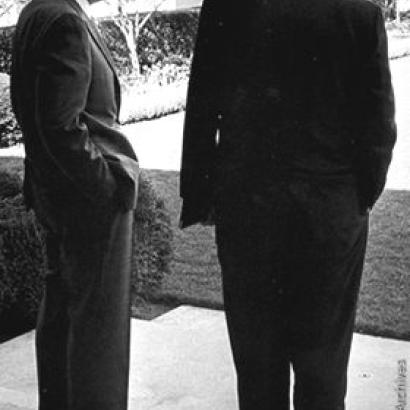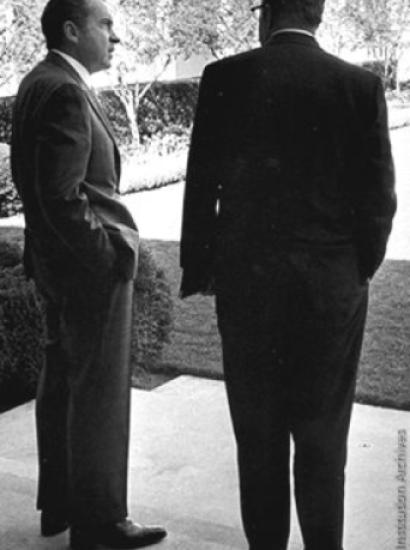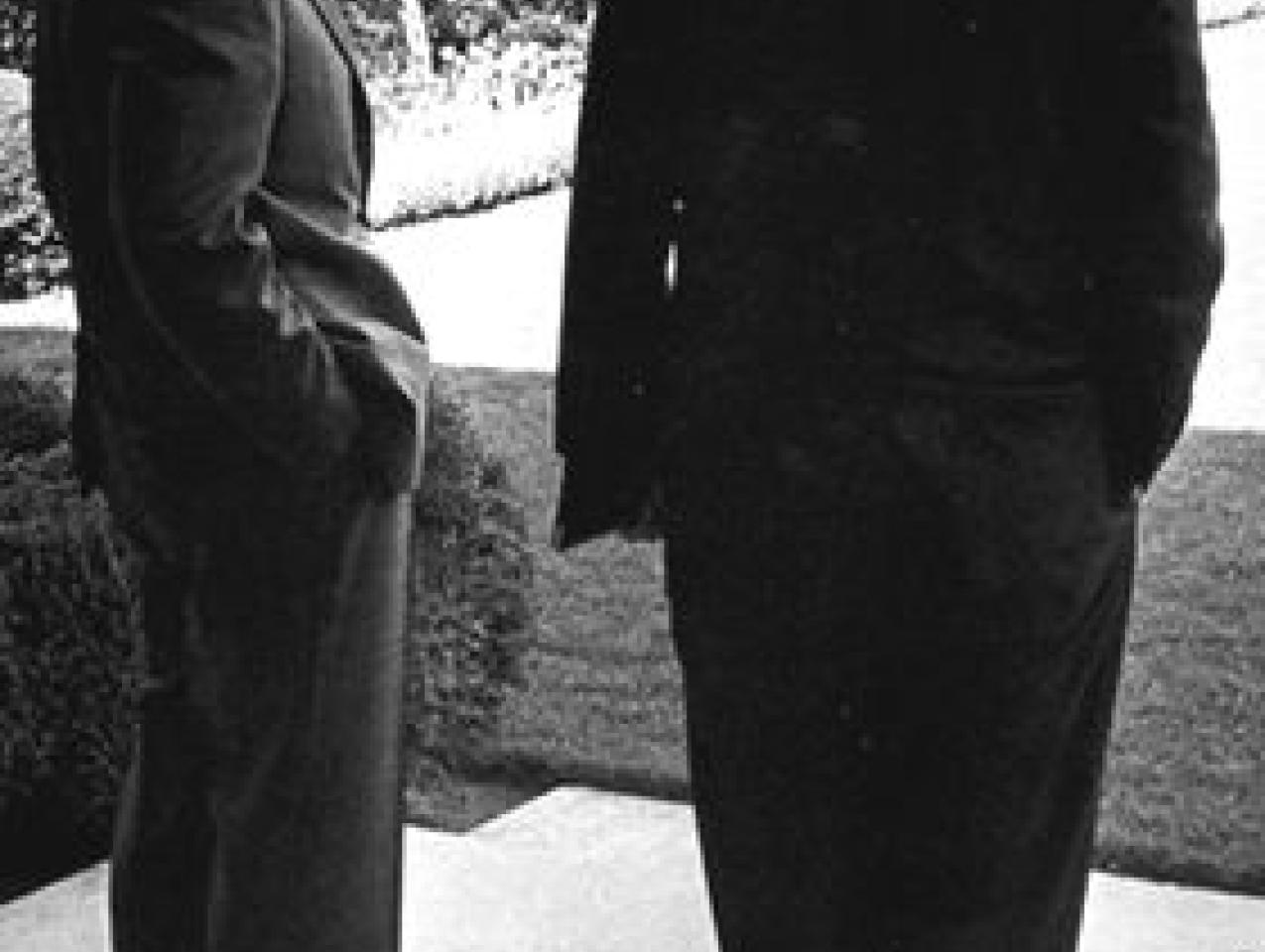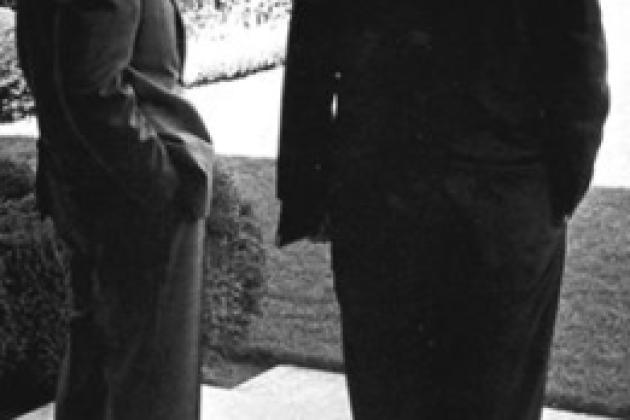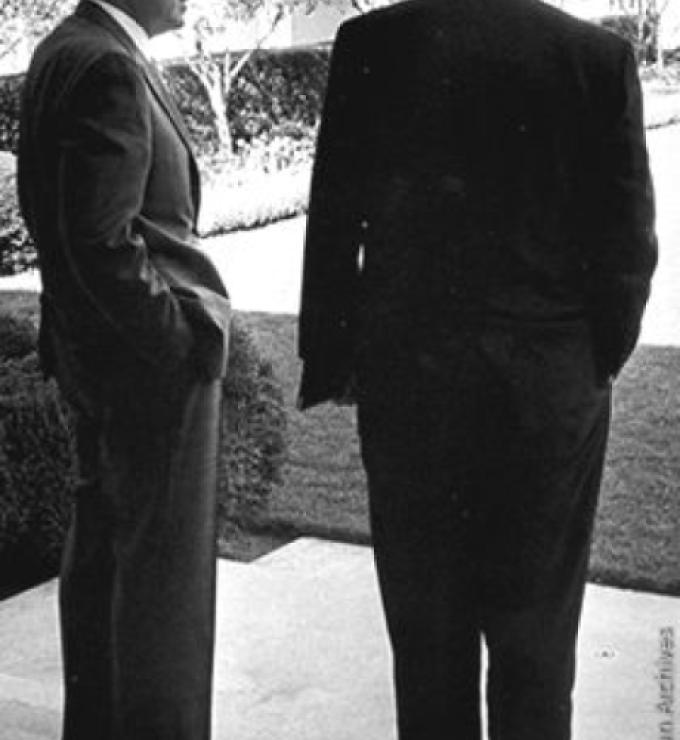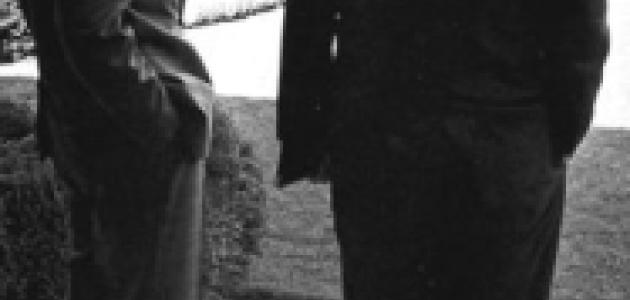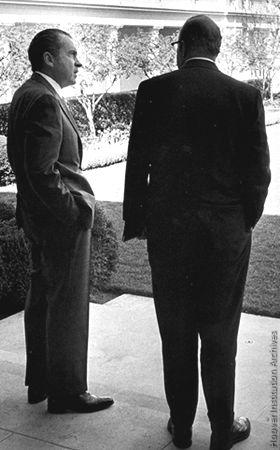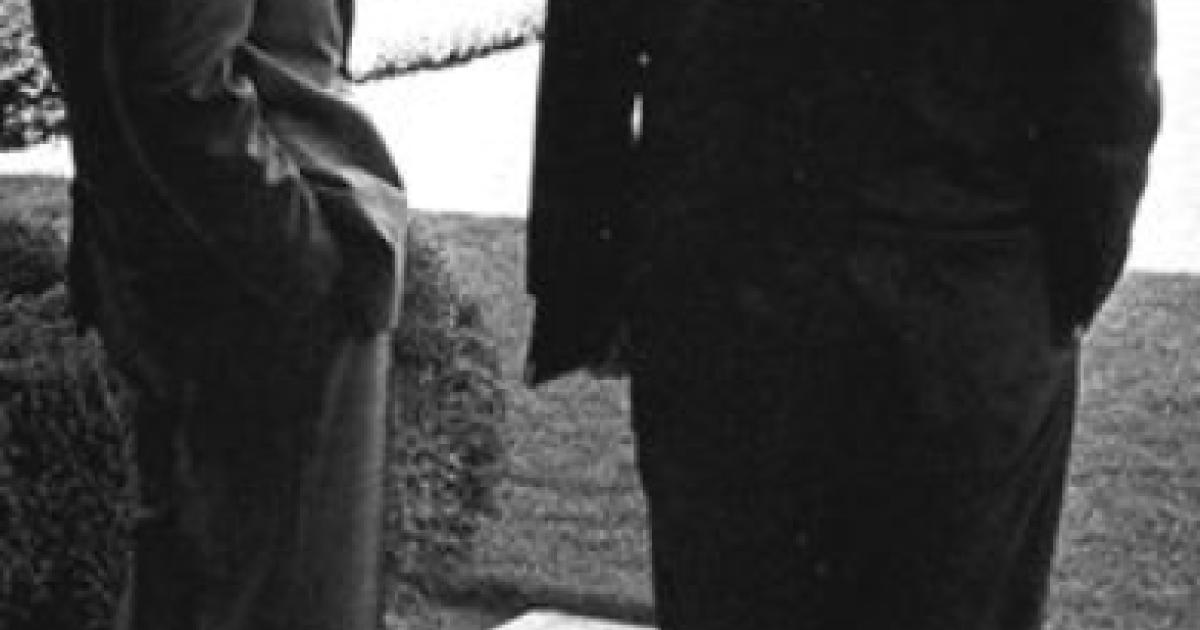- Contemporary
- History
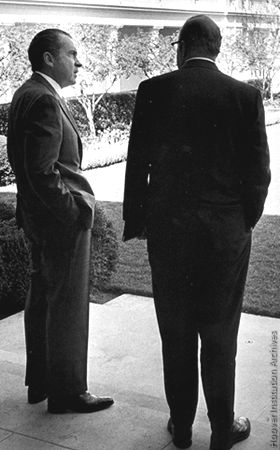
The Republican Party’s commitment to equality of opportunity has come under question recently, particularly its determination to deal effectively with racial segregation. That’s lamentable, for there is a laudable story to tell about the modern Republican Party and the efforts of a Republican president to ensure equal opportunity for all Americans.
In 1970, seven states—Alabama, Arkansas, Georgia, Louisiana, Mississippi, North Carolina, and South Carolina—continued to enforce the dual school system. This was in clear defiance of the Supreme Court’s 1954 decision in Brown v. Topeka Board of Education, which declared dual school systems to be unconstitutional. It was also in defiance of a 1969 Supreme Court decision ordering an end to further delay.
The whole subject was intensely controversial. Argument was superheated. Tensions were mounting. In March 1970, President Richard Nixon decided to take action. He declared Brown to be “right in both constitutional and human terms” and expressed his intention to enforce the law and to carry out the Supreme Court’s mandate. He also put in place a process to carry out the Court’s mandate. Vice President Spiro T. Agnew and I (then secretary of labor) were asked to lead a cabinet committee to manage the transition to desegregated schools.
The vice president said he wanted no part of this effort and declined to participate in the committee’s deliberations. So I became the de facto chairman. I had strong help from presidential counselor Pat Moynihan, Special Counsel Len Garment, and Ed Morgan, a savvy former advance man for the president. We talked it all over carefully with the president and, with his support, formed biracial committees in each of the seven states. The idea was to reach out to key leaders, to persuade them to be part of the solution, not part of the problem. The president agreed that politics should have nothing to do with the selection of the members of these committees. We wanted people, black and white, who were strong and respected in their constituencies. Many were reluctant to serve, the whites fearing too close an association with desegregation, the blacks concerned that the committee might be simply a sham.
The first group to come to Washington was from Mississippi, considered to be the most difficult state. We met in the Roosevelt Room of the White House, right opposite the president’s Oval Office. The discussion was civil, but deep divisions were evident. I let them argue and get it out of their systems. There came a point in the meeting after about two hours—and this pattern was repeated when groups from the other states came in—when it was time to shift gears. By prearrangement, I had John Mitchell standing by. He was known throughout the South as the tough guy, and on the whole was regarded by the whites as “their man.” I asked Mitchell, as attorney general, what he planned to do insofar as the schools were concerned. “I am attorney general, and I will enforce the law,” he growled in his gruff, pipe-smoking way. He offered no judgments about whether this was good, bad, or indifferent. “I will enforce the law.” Then he left. No nonsense.
So I said to the group, “The discussion we’ve had this morning has been intense and revealing, but you can see that it’s not really relevant. The fact is, desegregation is going to happen. The only questions for you as outstanding community leaders are, How will it work? Will there be violence? How will the education system in your community be affected? What will be the effect on your local economies? Most centrally, what can be done to make the transition work? You have a great stake in seeing that this effort is managed in a reasonable way, whether you like it or not.”
When lunchtime arrived, I took the whole group over to the diplomatic reception rooms in the State Department. I pointed out the desk designed by Thomas Jefferson on which he wrote parts of the Declaration of Independence: “dedicated to the proposition that all men are created equal.”
I sat with the two strong men I wanted to co-chair the Mississippi advisory committee: Warren Hood, president of the Mississippi Manufacturers Association and Dr. Gilbert Mason, a black physician and head of the Biloxi chapter of the NAACP. I argued that if they would accept, the committee would have great credibility with whites and blacks.
I could see they were beginning to talk constructively to each other, so I left them alone. One observer questioned this tactic, and I said, “I learned long ago that when parties get that close to agreement, it is best to let them complete their deal by themselves. That way, the agreement belongs to them—it’s theirs—and they will try to make it work.” As lunch ended, these two tough, respected leaders shook hands on their own deal. We were in business in what many regarded as the most problematic state.
After we returned to the White House, individuals started to make suggestions about how to handle this or that potential problem. We had developed a small kitty out of HEW flexible funds, so I could say to the committee members that if they judged that funds were needed for minor expenditures, I could provide some money on a fast-track basis. That seemed to help.
When the time was right, I let President Nixon know that we were ready for him. We walked across the hall into the Oval Office, where President Nixon spoke to them with conviction, with emotion, with eloquence. Looking around the room, he said, in essence, “Here we are in the Oval Office of the White House. Think of the decisions that have been made here and that have affected the health and the security of our country. But remember, too, that we live in a great democracy where authority and responsibility are shared. Just as decisions are made here in this office, decisions are made throughout the states and communities of our country. You are leaders in those communities, and this is a time when we all have to step up to our responsibilities. I have made my decision. I look to you to make yours. We have to work together for the right result.”
They left the Oval Office inspired by the president.
We went through much the same process with representatives of five other states. We felt we were on a roll. The last state was Louisiana. The schools would soon start opening. Our meetings were going so well that I and the group working with me suggested to the president that we hold this meeting in New Orleans. We would go to the South, where the action would take place. I would do my part in the morning. He could fly down from Washington and do his part at the end of the morning meeting. Then, in the afternoon, we would invite the co-chairmen from each of the seven states to join the president for an overall discussion of the school openings.
I remember the meeting in the Oval Office to discuss these proposed events. Vice President Agnew strongly warned the president not to go. “There you will be in that room, Mr. President,” he said. “Half the people there will be black, half will be white. Pictures will be taken. When the schools open, there will be blood running through the streets of the South, and if you go, this will be blood on your hands. This is not your issue. This is the issue of the liberals who have pushed for desegregation. Let them have it. Stay away.”
The president looked at me. I felt sure he had already decided to go and didn’t need arguments from me, but I told him what was obvious: “I can’t predict what will happen. The vice president may very well be right about violence, but you’re the president of the whole country. You have seen some very reasonable and strong people come up here. You’ve met with them and have had a big impact on them. We should do everything we can to see that the schools open and operate peacefully and well.”
The president decided to go ahead and so on August 14, 1970, he went to New Orleans.
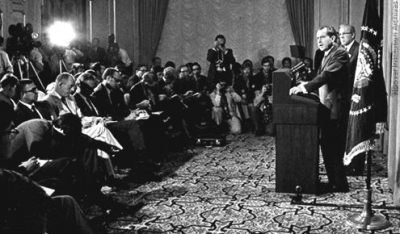
I left the night before the president and started in the morning with the biracial Louisiana group. The going was tougher than with any other state. I had to reflect that it’s one thing to gather right across from the Oval Office and it’s another thing to sit around a table in a hotel meeting room. President Nixon was due to arrive about noon, but as the time drew near, I had not reached the level of agreement that I wanted. “The president has just landed.” “The president is 20 minutes out.” “The president is ten minutes out.” We took a recess. I went out and met the president, Agnew’s views at the back of my mind. “Mr. President,” I told him, “I haven’t got this group quite there yet. I’m afraid you’re going to have to finish the job yourself.”
The president came in. He listened. He talked. He emphasized the importance of having the schools open peacefully. Remember, he said, if there are problems, the children are the ones who will suffer. He raised their sights. He brought them all on board.
That afternoon we had our meeting with the co-chairmen from the seven states. The meeting was highly publicized throughout the South. President Nixon talked eloquently about the importance of what was going to happen and the stake that everyone had in seeing it go smoothly. There were strong pledges of cooperation from whites and blacks alike. A sense of determination in a joint, compelling enterprise filled the room.
At the end of the meeting, President Nixon went before the television cameras to drive his message home:
The highest court of the land has spoken. The unitary school system must replace the dual school system throughout the United States. [If the widely predicted difficulties take place,] those who suffer will be primarily the next generation, the students, the children in the school district involved. . . . We believe, all of us, in law and order and justice. We believe in enforcing the law. But I also believe that leadership in an instance like this requires some preventive action. . . .
To me, one of the most encouraging experiences that I have had since taking office was to hear each one of these leaders from the Southern states speak honestly about the problems, not glossing over the fact that there were very grave problems, telling us what needed to be done from the federal standpoint, telling us also what they were doing at the local level. It was encouraging to see this kind of leadership.
Time will tell how successful we have been, but I do know this: As a result of these advisory committees being set up, we are going to find that in many districts the transition will be orderly and peaceful, whereas otherwise it could have been the other way. And the credit will go to these outstanding Southern leaders.
In the end, the school openings were peaceful, to the amazement of almost everyone. The leaders in their communities stood up to their responsibilities because the president stood up to his responsibilities.
I was not the only one impressed. Senator-to-be Pat Moynihan, writing at the time, said:
[The president] declared that “The unitary school system must replace the dual school system throughout the United States. . . . And I shall meet that responsibility.” Clearly this is what has been needed since the Supreme Court first spoke, and now it has happened. The authority of the President and the full support of the Federal Government have been brought to bear.
And New York Times columnist Tom Wicker wrote reflectively in 1991:
There’s no doubt about it—the Nixon administration accomplished more in 1970 to desegregate Southern school systems than had been done in the 16 previous years, or probably since. There’s no doubt either that it was Richard Nixon personally who conceived, orchestrated and led the administration’s desegregation effort. Halting and uncertain before he finally asserted strong control, that effort resulted in probably the outstanding domestic achievement of his administration.
I believe he was absolutely right.








